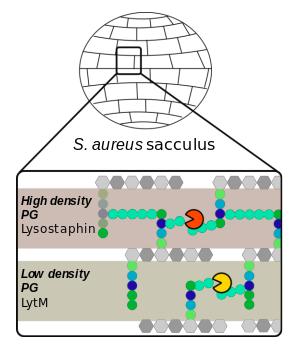
The maintenance of the bacterial wall, and in particular of the peptidoglycan which is the basis of the scaffolding of bacterial cell walls, is one of the preferred targets of antibiotics and understanding its fine regulation is essential to effectively combat resistance phenomena. The study, carried out in collaboration with a group of Polish microbiologists, focuses on two enzymes with similar structures and high lytic activity against Staphylococcus aureus, targeting the glycil-glycine bridge of the peptide strands of the polymer forming the scaffolding of bacterial cell walls, of which it ensures the vital integrity. Through the combination of solid and liquid nuclear magnetic resonance, combined with mass spectrometry, the study reveals how peptidoglycan cross-linking directly influences the activity, selectivity and specificity of these two enzymes. Indeed, the differences between the models obtained with the two enzymes become more pronounced in relation to the complexity and crosslinking of the polymer. These results highlight the complex interplay between enzymes and their substrates, paving the way for targeted antibacterial strategies.
Platform: https://www.ibs.fr/fr/recherche/assemblage-dynamique-et-reactivite/groupe-de-rmn-biomoleculaire/presentation
DOI: 10.1038 / s41467-023-42506-w
